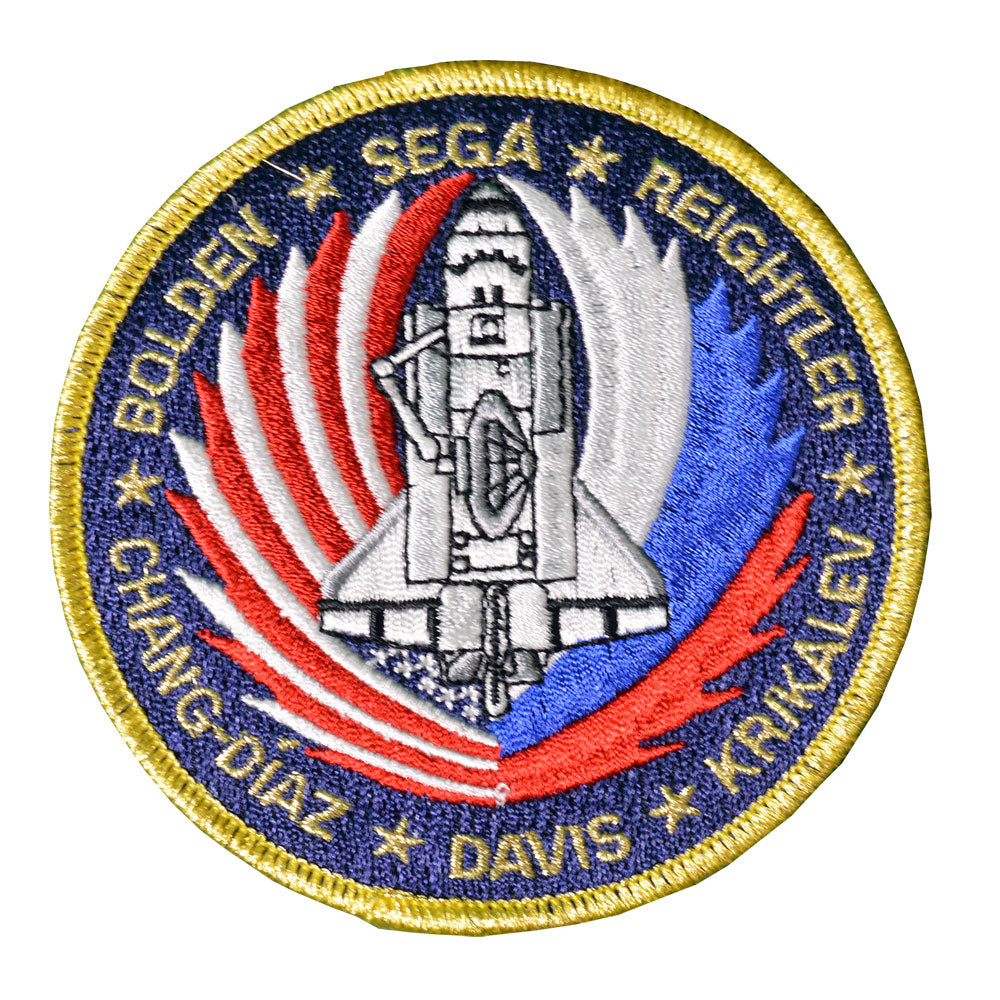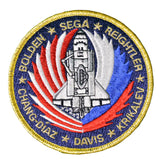
STS-60 Patch
STS-60 Patch
Mission Highlights
First shuttle flight of 1994 marked the first flight of Russian cosmonaut on U.S. space shuttle as first element in implementing Agreement on NASA/Russian Space Agency Cooperation in Human Space Flight. Mission also marked second flight of SPACEHAB pressurized module and 100th Get Away Special payload to fly in space. Also on board was Wake Shield Facility-1 (WSF-1), making first in a planned series of flights.
SPACEHAB-2 activated shortly after reaching orbit. Taking up about one quarter of payload bay, the 1,100 cubic foot (31 cu.m.) module carried 12 experiments. Four of these involved materials science topics, seven life sciences investigations, and a space dust collection experiment.
On flight day three, crew made first attempt to deploy WSF-1 using remote manipulator system arm. WSF-1 is deployable/retrievable experiment platform designed to leave a vacuum wake in low earth orbit that is 10,000 times greater than achievable on Earth. In this ultra-vacuum environment, defect-free thin-film layers of gallium arsenide and other semiconductor materials can be grown. First deploy attempt waved off due to radio interference and difficulty reading status signs on WSF-1. After second deploy attempt on flight day four waved off due to problems with WSF-1 attitude control system, five out of seven planned films grown with WSF-1 platform suspended at end of RMS arm. WSF-1 berthed in cargo bay on flight day six.
Crew also conducted first NASA-Russian Space Agency joint in-flight medical and radiological investigations. Krikalev communicated with amateur radio operators in Moscow using Shuttle Amateur Radio Experiment (SAREX) equipment. On Feb. 7, crew talked with President Clinton during latter’s tour of Mission Control in Houston, and on Feb. 9 Bolden and Krikalev talked with Russian Prime Minister Viktor Chernomyrdin, calling from Mission Control in Moscow.
Crew also deployed two payloads from Get Away Special canisters mounted on GAS bridge assembly in payload bay: six Orbital Debris Radar Calibration Spheres (ODERACS) ranging in size from two to six inches (5-15 centimeters) to aid calibration of radar tracking systems worldwide, and University of Bremen’s BREMSAT, which measured conditions such as acceleration forces affecting satellite.
Other payloads: Capillary Pumped Loop Experiment (CAPL) mounted on top of GAS Bridge Assembly; three additional GAS experiments; and Auroral Photography Experiment-Phase B (APE-B).


